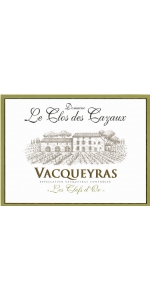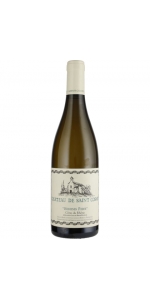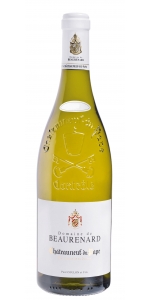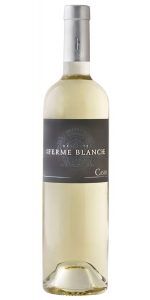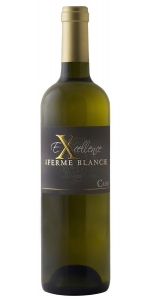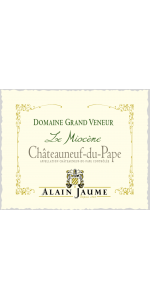Clairette
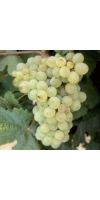
Clairette is an age old grape that originated in the southwestern part of France. Some folks believe that Clairette is made up of more than one grape that was cloned hundreds of years ago. Clairette is a wonderful white grape that is mostly grown in southern France giving wines delicate fruity notes. Clairette is one of the few grapes that are permitted in the production of Chateauneuf-du-Pape wines. The Rhone Valley, Provence, and Languedoc are the main areas of production for Clairette. There are some appellations that even carry the Clairette name, which is unusual for France. Those names include Clairette de Die, Clairette de Bellegarde, and Clairette de Languedoc. Clairette is also one of three varieties that are permitted for the noble white wines of Chateauneuf-du-Pape. The Clairette produces a lively, lemony, fruity flavor as opposed to the Roussanne and Bourboulenc, which provide complexity, longevity, and length. Clairette is also used to produce vermouth as it produces wine that is very high in alcohol and low in acidity. Wines yielded from Clairette are often described as flabby because they can oxidize quite easily. Outside of France, Clairette is also grown in Australia, Sardinia and South Africa for sparkling wines.
HUGE SALE $80 OFF CASE PRICE
Regularly $479, now $399!
Cazaux Vacqueyras Blanc Les Clefs d'Or is made from 50% Clairette, 30% Roussanne and 20% Grenache Blanc.
A wine with lively acidity, expressive aromas of fennel and white flowers. It is long and full in the mouth with minty and anisy aromas mixed with white peach flavors. Refreshing and mineral character.
Clairette grapes are green harvested to concentrate and harmonize aroma. Each grape varietal is hand picked separately. Pressing with skin contact at low temperature. Aged 12 months in stainless steel tank. (No oak)
Enjoy this wine with all sorts of fish starters, squid salad with olive oil and basil. A must try with fresh oysters.
Review:
Pear-scented, medium- to full-bodied, there's plenty of cut and thrust to the flavors, aided by incisive acidity. Ends long on fresh pear fruit. Well balanced and fresh. Sandy soils, facing southeast. - Matt WALLS ."
- Decanter (October 1st 2022), 92 pts
Domaine de Beaurenard Chateauneuf-du-Pape Blanc is made from Clairette blanche & Rose, Grenache Blanc & Gris, Bourboulenc, Roussanne, Picpoul and Picardan.
Gold bright green color. Expressive nose with pear and stone fruits aromas (peach, apricot) with jasmine and roasted almonds notes. The mouth is smooth and fleshy like stone fruit we can smell, with a long a nice finish.
Review:
Bright golden yellow, silver reflections. Delicate herbal spices, a hint of chamomile and mandarin zest, pears and blossom honey are underneath. Juicy, elegant, white peach, delicate honeydew melon, mineral and harmonious, fine fruit sweetness, good ripening potential.
-Falstaff 92 Points
Ferme Blanche Cassis Blanc Excellence is made from 50% Marsanne and 50% Clairette.
On the nose, white fruits, citrus zest, hint of vanilla. Velvety well balanced mouth of ripe fruits and minerality.
Pair with trout, Scallop, or better yet lobster would complement this wine perfectly.
Ferme Blanche Cassis Blanc Excellence is made from 50% Marsanne and 50% Clairette.
On the nose, white fruits, citrus zest, hint of vanilla. Velvety well balanced mouth of ripe fruits and minerality.
Pair with trout, Scallop, or better yet lobster would complement this wine perfectly.
Ferme Blanche Cassis Blanc Excellence is made from 50% Marsanne and 50% Clairette.
On the nose, white fruits, citrus zest, hint of vanilla. Velvety well balanced mouth of ripe fruits and minerality.
Pair with trout, Scallop, or better yet lobster would complement this wine perfectly.
Grand Veneur Chateauneuf du Pape Blanc Le Miocene is made from 60% Clairette, 40% Roussanne
Pale yellow colour with hints of green, aromas of white flowers (may blossom, honeysuckle).
The palate is pleasantly balanced between liveliness and roundness, which brings out characteristics of dried apricot, honey and elderberry. A Châteauneuf du Pape white displaying a great finesse.
Best between 1 and 8 years.
Soil type Coming from the single vineyard named “La Fontaine”, the plot is facing north.It is made of clay-sand and limestone. Thanks to the northern orientation, it is always very well aired. This sector allow the Roussane and Clairette to mature in great conditions without losing freshness, which we believe is key point. Winemaking & ageing Whole-bunch pressing. Vinification in stainless-steel tanks. Fermentation temperature controlled at 15°C.
Review:
"The classic white from this estate is the 2021 Châteauneuf Du Pape Le Miocene Blanc, and it shines in the vintage. Based on 60% Clairette and 40% Roussanne, it has a lighter gold hue as well as textbook aromatics of citrus, pears, and minty herbs. I love its balance, it’s medium-bodied, has the vintage’s fresher style, and outstanding length. It should evolve gracefully, and while the safe bet is to enjoy bottles over the coming 2-4 years, I wouldn’t be surprised to see this evolve for well over a decade."
- Jeb Dunnuck (November 2022), 92 pts
Grand Veneur Chateauneuf du Pape Blanc Le Miocene is made from 60% Clairette, 40% Roussanne
Pale yellow colour with hints of green, aromas of white flowers (may blossom, honeysuckle).
The palate is pleasantly balanced between liveliness and roundness, which brings out characteristics of dried apricot, honey and elderberry. A Châteauneuf du Pape white displaying a great finesse.
Best between 1 and 8 years.
Soil type Coming from the single vineyard named “La Fontaine”, the plot is facing north.It is made of clay-sand and limestone. Thanks to the northern orientation, it is always very well aired. This sector allow the Roussane and Clairette to mature in great conditions without losing freshness, which we believe is key point. Winemaking & ageing Whole-bunch pressing. Vinification in stainless-steel tanks. Fermentation temperature controlled at 15°C.
Review:
"The 2023 Châteauneuf du Pape Le Miocene Blanc is mostly Clairette but includes 40% Roussanne. Its vivid gold hue is followed by a beautiful perfume of stone fruits, grilled peach, minty flowers, and some spicy nuances. It's balanced and medium to full-bodied, with a kiss of background oak and flawless balance. It's a brilliant white from this talented family that readers will love to drink over the coming 4-6 years, if not upwards of a decade."
- Jeb Dunnuck (Importer Highlight: Fran Kysela ; July 2024), 93 pts
- back
Selected Options
Grape Types
Categories
Pricing
Countries
Regions
Grape Types
Wineries
Organic/Free Shipping
It is hard to imagine with the Lithology range receiving 298 points out of 300 for the three single-vineyard wines, that there could possibly be a wine above them. But there is, and it is our Estate wine. Blended several times very intently by masters of their craft Philippe Melka and Michel Rolland, this is the ultimate expression of our house’s work. Positive, full-bodied, and quite powerful, there’s the expected crème de cassis and blackberry from St. Helena Cabernets, with mineral, herb, subtle tobacco and vanilla, plum skins, and pie crust, purple flowers, forest-conifer notes, and very fine tannic structure. It is a magnificent, and magnificently elegant expression of this house, and when asked recently, Monsieur Rolland stated plainly to me, “oh yes indeed – this is the best one, the best yet…”
Review:
The flagship 2018 Cabernet Sauvignon Alejandro Bulgheroni comes from a selection made by winemakers Philippe Melka and Michel Rolland, mostly from Rutherford and Oakville fruit. Aged 20 months in 78% new French oak, it has incredible aromatics of black and blue fruits, spring flowers, and graphite to go with a massive, full-bodied, concentrated style on the palate that somehow stays graceful, weightless, and elegant. This tour de force in Napa Valley Cabernet Sauvignon is guaranteed to put a smile on your face over the coming 20-25+ years.
-Jeb Dunnuck 99 Points
Its sparkling gold color is vivid and bright. The aromas are floral and honeyed with a wisp of vanilla. The palate is elegantly full with ripe white peach flavors and toasty overtones but balanced with a lively freshness, and delicacy on the long finish.
A beautiful tribute to the top champagne produced at the Maison Trouillard and a decadent partner to foie gras!

